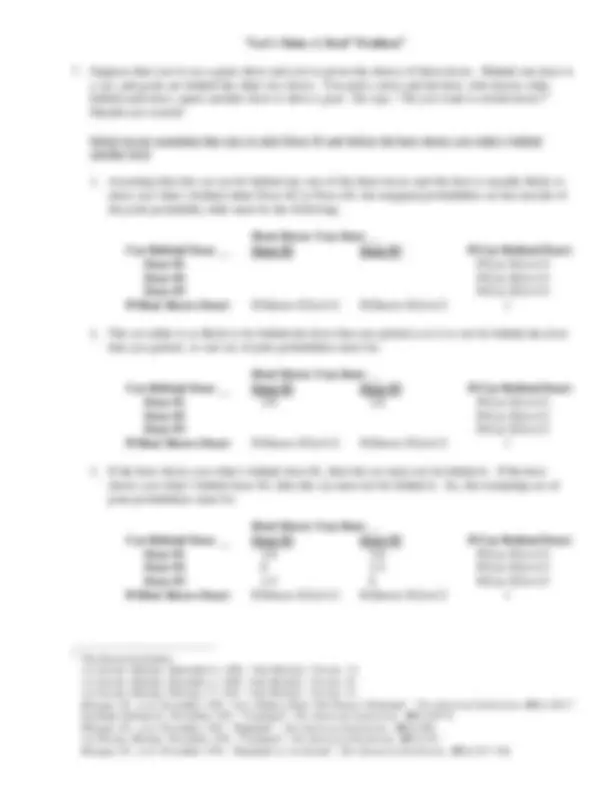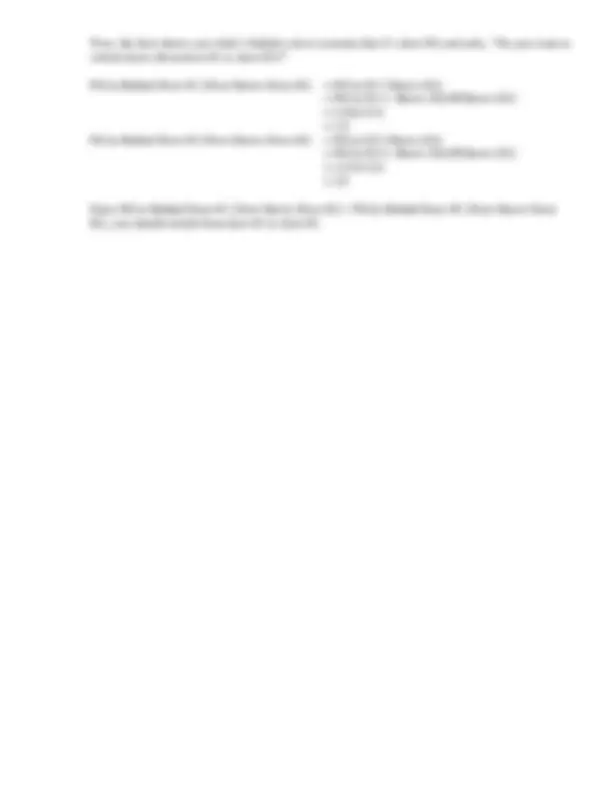




Study with the several resources on Docsity

Earn points by helping other students or get them with a premium plan


Prepare for your exams
Study with the several resources on Docsity

Earn points to download
Earn points by helping other students or get them with a premium plan
Community
Ask the community for help and clear up your study doubts
Discover the best universities in your country according to Docsity users
Free resources
Download our free guides on studying techniques, anxiety management strategies, and thesis advice from Docsity tutors
Various probability problems and their solutions, including the birthday problem, medical diagnosis problem, bertrand's box problem, and let's make a deal problem. These problems cover concepts such as conditional probability and joint probability.
Typology: Assignments
1 / 4

This page cannot be seen from the preview
Don't miss anything!



Four Birthday Problems^2
The general probability is: p = [364/365]n
Since: [364/365]^253 = .499523 ˜. Therefore: 1 - [364/365]^253 = 1-.499523 ˜.
Using: 1-[364/365]n^ = 1/n Ë n ˜ 19
Use: 1-[364/365][363/365][362/365]… [{365-(n-1)}/365] since the nth^ person is the one we’re trying to find the same birthday for.
Let n=23: 1-[364/365][363/365][362/365]… [{365-22}/365] = .492703 ˜.
The Medical Diagnosis Problem^3
D = Has the disease T = Test result is positive
Given: P(D) = .001 so P(Not D) =. P(T | Not D) =. P(T | D) = 1.
(^1) All of these questions are common ones, but I took the suggestion to use them from: Richard G. Seymann. November
Wiley. (^3) This question was presented to 60 students and staff at the Harvard Medical School. Over half of the participants
responded 95% and only 11 gave the correct response. Hmm… See: D. Kahneman, P. Slovik, and A. Tversky. 1982. Judgement Under Uncertainty: Heuristics and Biases. Cambridge, UK: Cambridge University Press.
P(D | T) = P(Tn D) / P(T) P(Tn D) = P(D)P(T | D) =. P(T) = P(Tn D) + P(Tn Not D) = P(Tn D) + P(Not D)P(T | Not D) = .001 + (.999)(.05) =. P(D | T) = .001/.05095 =.
“Bertrand’s Box” Problem^4
Initial set-up
P(A | G) = P(An G)/P(G) = (1/3)/(1/2) = 2/
(^4) See: R. Weatherford. 1982. Philosophical Foundations of Probability Theory. London: Routledge and Kegan Paul.
Now, the host shows you what’s behind a door (assume that it’s door #2) and asks, “Do you want to switch doors (from door #1 to door #3)?”
P(Car Behind Door #1 | Host Shows Door #2) = P(Car D1 | Shows D2) = P(Car D1 n Shows D2)/P(Shows D2) = (1/6)/(1/2) = 1/ P(Car Behind Door #3 | Host Shows Door #2) = P(Car D3 | Shows D2) = P(Car D3 n Shows D2)/P(Shows D2) = (1/3)/(1/2) = 2/
Since P(Car Behind Door #1 | Host Shows Door #2) < P(Car Behind Door #3 | Host Shows Door #2), you should switch from door #1 to door #3.